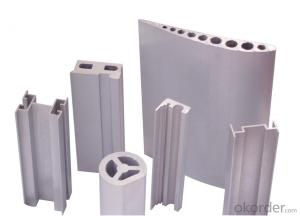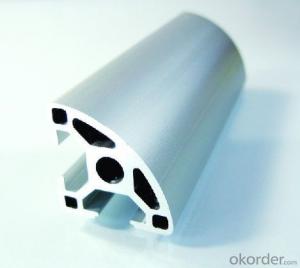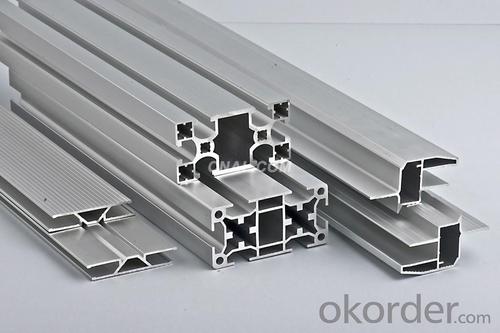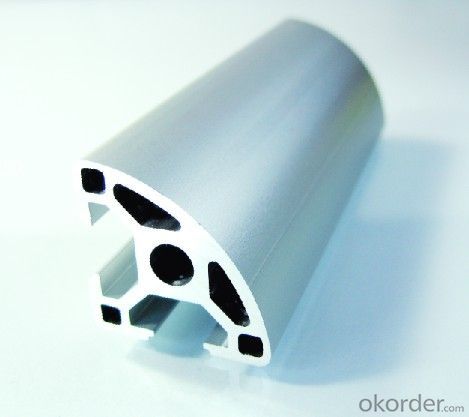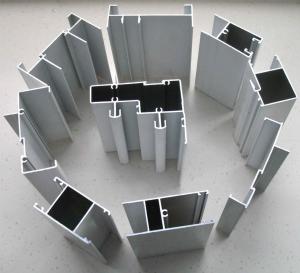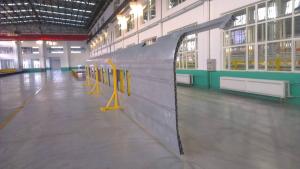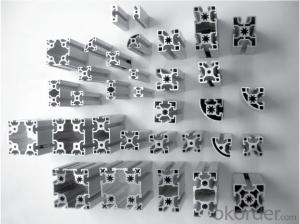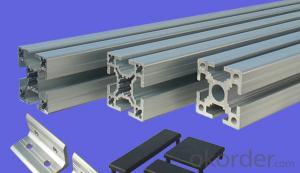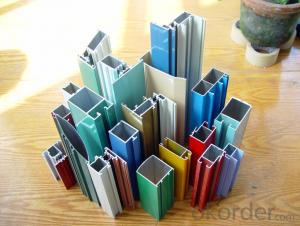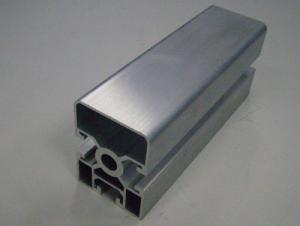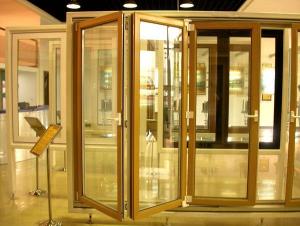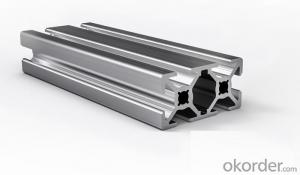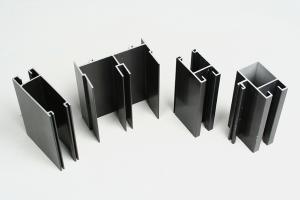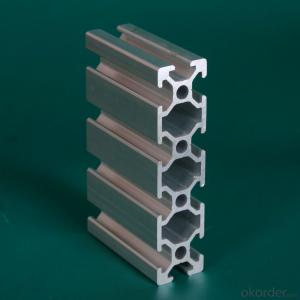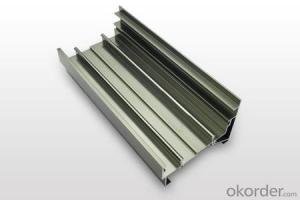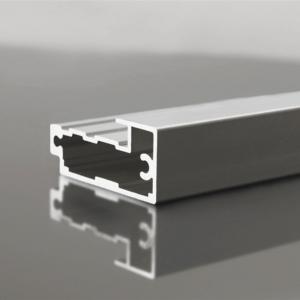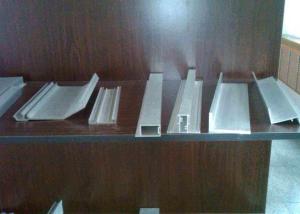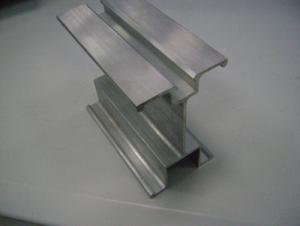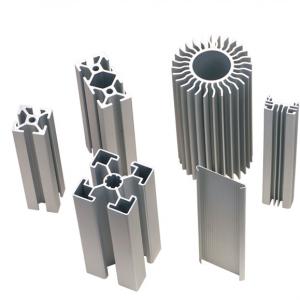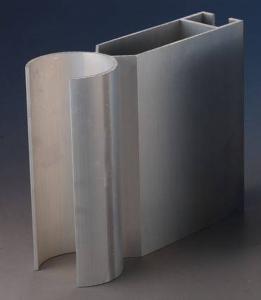Aluminum Trim Profiles for Aluminum Profile Extrusion
OKorder Service Pledge
OKorder Financial Service
You Might Also Like
Aluminium is a relatively soft, durable, lightweight, ductileand malleablemetalwith appearance ranging from silvery to dull gray, depending on the surfaceroughness. It is nonmagnetic and does not easily ignite. A fresh film ofaluminium serves as a good reflector (approximately 92%) of visible lightand an excellent reflector (as much as 98%) of medium and far infraredradiation. The yield strength of pure aluminium is 7–11 MPa,while aluminium alloys have yield strengths ranging from200 MPa to 600 MPa. Aluminium has about one-third the densityand stiffness of steel. It is easily machined,cast, drawn and extruded.
Features:
Material | Alloy 6063,6061,6005or according to customer’s choice |
Temper | T3, T4, T5, T6 |
Surface | Anodize, electrophoresis, powder coating, PVDF coating, wood grain painting, matted, etc. |
Length | Coating 6.5 meters, Anodizing 6.5 meters, Mill finish 5 meters |
Application | Industrial, electrical equipment(TV set, air conditioner, refrigerator, computer), decoration,construction, transportation |
Custom Made | We can package following with customer's request. |
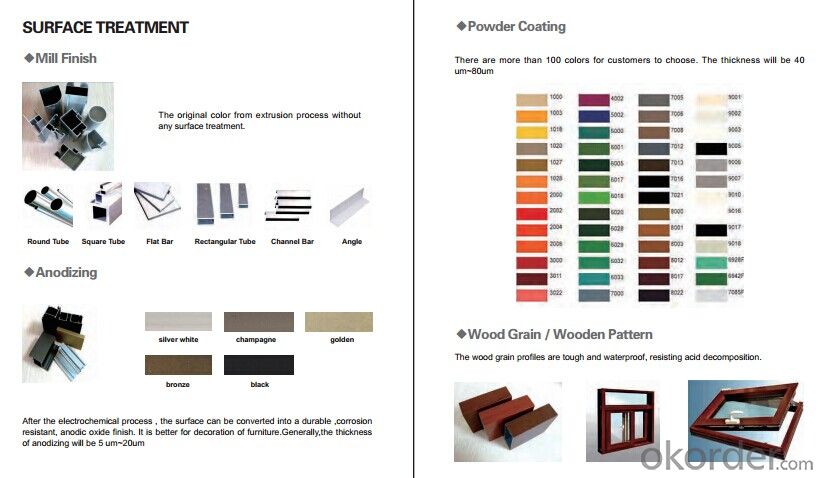
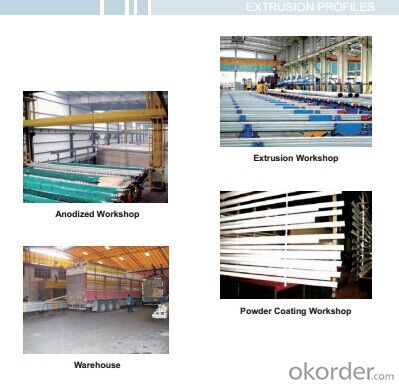

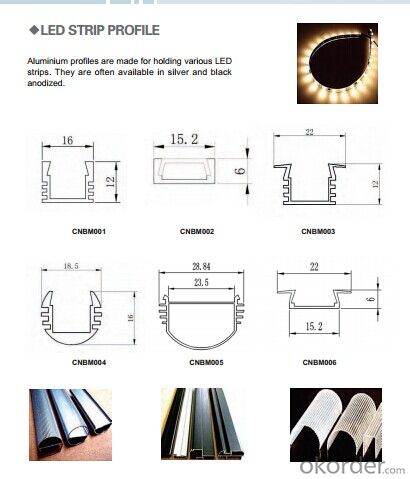
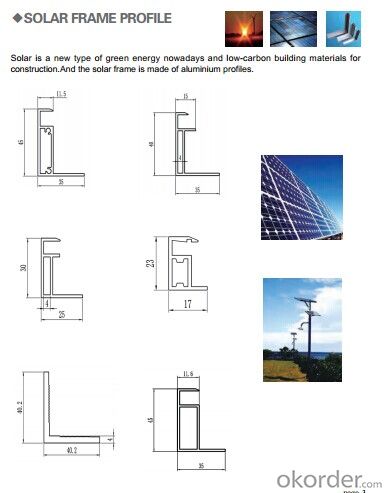
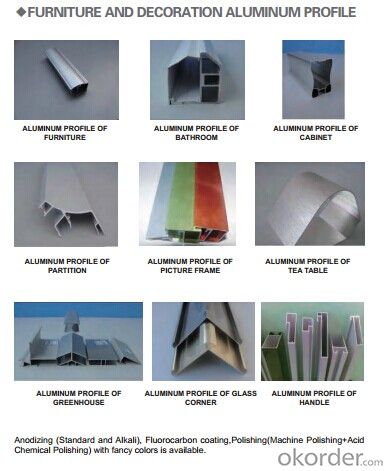
- Q: What does "T" in the aluminum profile 6063-T5 mean?
- China's current general is the United States Aluminum Association "Aluminium Association" numberT5By cooling the high temperature molding process, and then the artificial aging state. Applied by cooling high temperature molding process, not through the cold processing (for straightening and leveling, but does not affect the mechanical properties of the limit), to artificial aging products.
- Q: This question asks for methods to guarantee the high quality of aluminum profiles used in a construction project.
- <p>To ensure high-quality aluminum profiles for your building project, start by selecting profiles from reputable manufacturers known for quality. Check for certifications such as ISO 9001 for quality management systems. Inspect the profiles for uniformity in thickness and color, and ensure they are free from defects like dents or scratches. Request third-party test reports to verify the strength and durability of the profiles. Additionally, consider the chemical composition and alloy type to ensure they meet the required specifications for your project. Always procure from suppliers who offer warranties and after-sales support.</p>
- Q: Can aluminum profiles be used in the construction of stadium seating systems?
- Yes, aluminum profiles can be used in the construction of stadium seating systems. Aluminum is a lightweight and durable material that is commonly used in various construction applications, including stadium seating systems. It offers several advantages such as corrosion resistance, high strength-to-weight ratio, and ease of fabrication. Aluminum profiles can be easily customized and assembled to create seating structures that are strong, stable, and visually appealing. Additionally, aluminum's lightweight nature allows for easier installation and transportation, making it a cost-effective choice for stadium seating systems. Overall, aluminum profiles are a suitable option for constructing stadium seating systems due to their strength, durability, and versatility.
- Q: What is aluminum profile?
- 4) non ferromagnetic; aluminum is non ferromagnetic, which is an important feature of the electrical and electronic industries. Aluminum can not be spontaneous combustion, which is involved in loading and unloading or exposure to flammable and explosive materials is important. 5) machinability; the machinability of aluminum profiles is excellent. In a variety of wrought aluminum and cast aluminum alloys, and in the various states after which these alloys are produced, the machining characteristics vary considerably, which requires special machine tools or techniques. 6) formability; specific tensile strength, yield strength, ductility, and corresponding work hardening rate govern the amount of allowable deformation. 7) recovery; aluminum is highly recycled; the characteristics of recycled aluminium are almost the same as those of primary aluminum. According to the use of classification: 1. construction aluminum profiles (divided into doors and windows and curtain wall two). 2. radiator aluminum profiles. 3. general industrial aluminum: mainly used in the manufacture of industrial production, such as automation equipment, covering the skeleton and the custom mold machinery and equipment according to their own requirements, such as assembly line conveyor belt, hoisting machine, glue machine, testing equipment, shelves and so on, the electrical machinery industry and clean room with. 4, rail vehicle structure aluminum alloy profile: mainly used for rail vehicle body manufacturing. 5, Mount Aluminum profiles, made of aluminum alloy frame, mounted a variety of exhibitions and decorative paintings.
- Q: What are the reasons for the large number of products in the aluminum profile cutting machine after opening?
- When sawing, lubrication is insufficient, check the lubrication system, and the other may be aluminum material is not good
- Q: This question asks for methods to prevent rust formation on aluminum profiles during the periods of storage and transportation.
- <p>To prevent rust on aluminum profiles during storage and transportation, follow these guidelines: 1. Keep aluminum profiles dry and clean, avoiding contact with moisture or corrosive substances. 2. Store profiles in a cool, dry place, away from direct sunlight and heat sources. 3. Use protective packaging materials to shield profiles from physical damage and moisture. 4. Apply a protective coating or sealant to the aluminum surface if it's exposed to harsh environments. 5. Regularly inspect stored profiles for signs of corrosion and address any issues promptly. By adhering to these practices, you can minimize the risk of rust formation on aluminum profiles during storage and transportation.</p>
- Q: Are there any fire safety considerations when using aluminum profiles?
- Fire safety considerations must be taken into account when utilizing aluminum profiles. Although aluminum is not combustible, it can still contribute to the spread and intensity of a fire. Aluminum profiles, particularly in construction or industrial settings, can act as fuel for a fire and potentially worsen its severity. One crucial consideration is the fire rating of the aluminum profiles. Fire ratings indicate how long a material can withstand fire exposure before failing. It is vital to choose aluminum profiles with appropriate fire ratings that match the specific application requirements. This guarantees that the profiles can delay the fire's spread, providing valuable time for evacuation and firefighting efforts. Another consideration is the use of suitable insulation materials. Aluminum profiles are often used in building facades, curtain walls, and other structural applications. In these cases, it is important to ensure that the insulation materials used with the aluminum profiles are fire-resistant. This prevents the fire from spreading through the building envelope and reduces the risk of structural failure. Furthermore, fire safety measures should be implemented during installation. Proper firestopping techniques should be applied to seal any gaps or penetrations around the aluminum profiles. This prevents flames, smoke, and hot gases from passing from one compartment to another, limiting the fire's spread. Regular maintenance and inspection of the aluminum profiles are also crucial for fire safety. Any damage or deterioration should be promptly addressed to prevent potential fire hazards. Additionally, adequate fire detection and suppression systems should be in place to detect and control fires in a timely manner. Overall, although aluminum profiles themselves are not combustible, it is imperative to consider various fire safety measures when using them in construction or industrial applications. By selecting suitable fire-rated profiles, using fire-resistant insulation materials, employing proper installation techniques, and conducting regular inspections, the risk of fire can be minimized, ensuring the safety of occupants and property.
- Q: How to distinguish the good or bad of aluminum profile simply?
- With customers in the process of aluminum found billion purchase of aluminum profile, most do not know how to see the quality of aluminum profiles. And sometimes, many users in order to save costs, and select some cheaper industrial aluminum to do the work table stent, resulting in not long after the emergence of cracking, fading situation.
- Q: Can aluminum profiles be used in telecommunications infrastructure?
- Telecommunications infrastructure can indeed utilize aluminum profiles. Aluminum, a versatile and lightweight material, boasts numerous benefits in telecommunications applications. It possesses corrosion resistance, making it ideal for outdoor setups exposed to severe weather. Moreover, aluminum profiles are easily fabricated and customizable, allowing for specific requirements like mounting brackets, cable trays, or equipment racks. Additionally, aluminum profiles possess outstanding electrical conductivity, a crucial aspect in telecommunications infrastructure for efficient signal transmission. They find utility in constructing transmission towers, antenna supports, and base stations, serving various purposes. Furthermore, aluminum stands out as a sustainable material, as it can be recycled repeatedly without compromising its properties. This aligns with the growing emphasis on environmental sustainability within the telecommunications industry. To sum up, aluminum profiles present a cost-effective and reliable solution for telecommunications infrastructure, offering durability, flexibility, and exceptional electrical conductivity.
- Q: What are the environmental effects of utilizing aluminum profiles in the construction industry?
- <p>Yes, there are environmental impacts associated with using aluminum profiles in construction. Aluminum production is energy-intensive, which contributes to greenhouse gas emissions. However, aluminum is recyclable, and its recycling process requires significantly less energy than primary production, reducing environmental impact. Additionally, aluminum profiles are lightweight, which can reduce transportation emissions. Despite these benefits, concerns remain about the energy used in aluminum production and the potential for leaching of aluminum into the environment, which can affect soil and water quality.</p>
Send your message to us
Aluminum Trim Profiles for Aluminum Profile Extrusion
OKorder Service Pledge
OKorder Financial Service
Similar products
Hot products
Hot Searches
Related keywords
